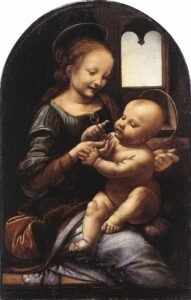Why Plein Air Sketching Improves Your Art | Benefits, Tools, and Techniques
Classical Styles, On LocationThe Power of Drawing Outdoors Plein air sketching—drawing directly from life in the open air—is one of the most transformative […]
 Classical Styles celebrate timeless methods in art-making that prioritize discipline, craftsmanship, and tactile exploration.
Classical Styles celebrate timeless methods in art-making that prioritize discipline, craftsmanship, and tactile exploration.
This category explores foundational practices like classical shading, brushwork, and composition, helping artists deepen their understanding through proven approaches. Whether refining skills or building from scratch, it’s a space where technique meets intention—and mastery begins.
The Power of Drawing Outdoors Plein air sketching—drawing directly from life in the open air—is one of the most transformative […]
Contour drawing is one of the most effective ways to strengthen your observational skills, sharpen your hand‑eye coordination, and develop
Sfumato is one of the most captivating techniques in art, known for its ability to create soft, smoky transitions between
Drawing is about volume—not just lines. When you sketch everything as overlapping boxes and spheres, you unlock a deeper understanding
How French Art History Shaped Modern Sketchbook Culture France has long been a crucible of artistic innovation, from the grandeur
Expressive caricature portraits are more than exaggerated drawings—they’re bold interpretations of personality, emotion, and character. From quick sketches at street
What Is Gesture Drawing? When it comes to capturing the essence of the human form—or any living subject—gesture drawing stands
Unique Hand Lettering Style That Grows From the Page Developing a unique hand lettering style is a blend of practice,
What Makes Toned Paper with White Chalk So Effective? When it comes to elevating traditional drawing techniques, few approaches are
Getting Scaled In the world of classical representational art, sight-size drawing remains one of the most precise and time-tested techniques
Line & Value Mastering hatching and cross-hatching is an essential step in becoming a confident and versatile artist. These linear
Chiaroscuro Chiaroscuro shading is one of the most powerful tools in an artist’s visual vocabulary. By emphasizing dramatic light and
What Is a Grid or Block Layout? The grid or block layout is one of the most enduring and versatile
Understanding Composition in Art Defining Composition Composition is the deliberate arrangement of visual elements—shapes, colors, lines, textures, and space—within a
Unlocking Your Sketchbook Mind In a fast-paced world where moments are fleeting, observation is the unsung hero of creativity. For